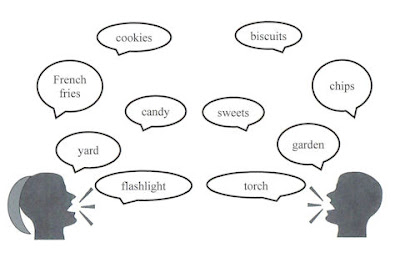Since
I’m currently writing a book in the form of columns for a fictional English
newspaper, I should use the grammar and spelling conventions that my
protagonist would use. That could confuse my American audience, but it probably
won’t since many of us are used to reading books that come “across the pond” (or
‘across the pond’) with the British grammar and spelling intact. The biggest
issue is to make sure I catch it all.
As
you can see from the graphic at the head of this post, the British use a single
quote around dialogue where we use a double one. It does not, however, show the
dissimilar placement of commas and periods that come after a quote mark because
the example has no difference. The British place the comma or period inside the
quote mark if it is part of the quoted material and outside if it is not, while
American English always puts commas and periods on the inside. In the following
example, the first sentence is American while the second is British.
The British call a period a “full stop.”
The British call a period a ‘full stop’.
The
graphic also demonstrates one of many spelling differences. Spelling was the
only subject I got Ds in at school. Even so, I had learned how to spell
“color.” Then we moved to Scotland for what would have been my 6th
grade year at home, and I had to relearn the spelling as “colour.” It wasn’t
the only word I had to relearn, and I hated it, especially knowing that I would
have to learn the American spellings all over again when we returned to
Michigan.
American
grammar conventions are second nature to me, and even American spelling comes
more naturally than British spelling does. I simply cannot write the early
drafts any other way. Fortunately, Microsoft WORD’s grammar and spell check
program has a British version. So if I decide to use British grammar and
spelling conventions in my column (and I probably will), I can run that before
finalizing the manuscript. That still doesn’t guarantee that I’ll get it all correct,
though.
What
I’d give for a single form of English.



